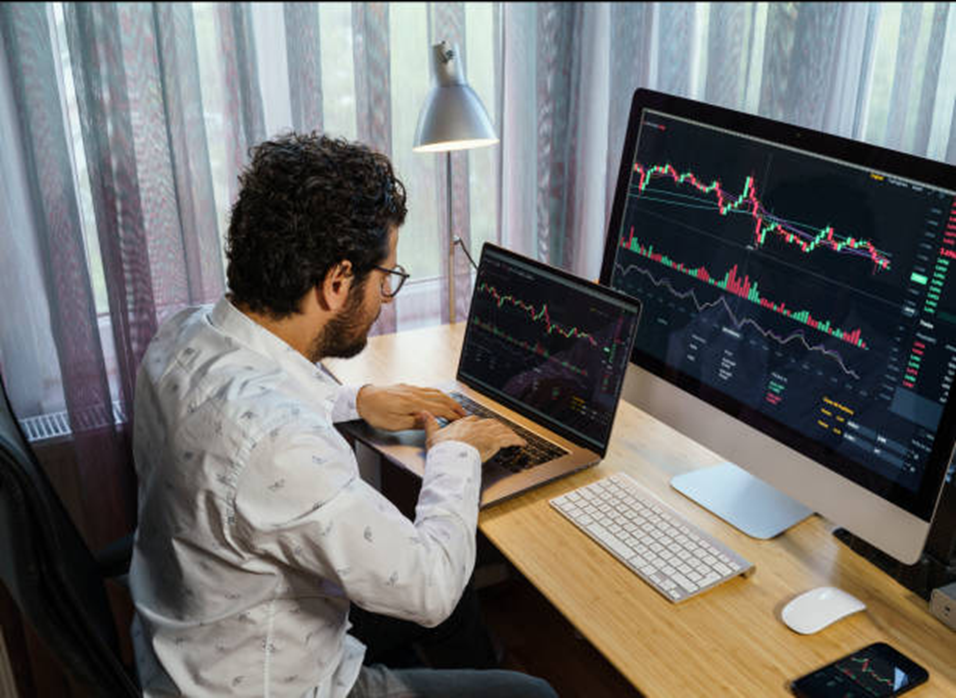Leverage trading amplifies both gains and losses by allowing traders to control positions larger than their actual capital. This financial tool can accelerate wealth accumulation when used correctly or destroy accounts when misapplied. Understanding the mathematics behind leverage, calculating optimal ratios for different strategies, and implementing rigorous risk controls separates sustainable leverage use from speculative gambling that inevitably ends in account wipeouts.
What Is Leverage Trading: The Fundamental Mechanics
What is leverage trading at its core? It’s borrowing capital to increase position size beyond what your own funds allow. If you have £10,000 and use 2:1 leverage, you control a £20,000 position. Your broker lends you the additional £10,000, using your capital as collateral. If the position rises 10%, you gain £2,000 on your £10,000 – a 20% return. However, a 10% decline creates a £2,000 loss – also 20% of your capital.
Leverage is expressed as ratios. 2:1 leverage means £1 of your capital controls £2 of position value. 10:1 means £1 controls £10. Forex brokers commonly offer 50:1 or even 100:1 leverage, allowing £1,000 to control £50,000 or £100,000 positions. While this amplifies profit potential, it equally amplifies loss potential, creating extreme risk most traders underestimate.
Leverage ratio mechanics:
- 2:1 leverage: Double exposure, gains and losses doubled
- 5:1 leverage: 5x exposure, gains and losses multiplied by 5
- 10:1 leverage: 10x exposure, 10% adverse move wipes out capital
- 50:1 leverage: 2% adverse move eliminates account
- 100:1 leverage: 1% adverse move causes total loss
The mathematical reality is unforgiving. At 50:1 leverage, a mere 2% adverse price movement eliminates your entire capital. Markets routinely move 2% intraday, making extremely high leverage a near-certain path to account destruction over time.
The Kelly Criterion: Theoretical Optimal Leverage
The Kelly Criterion provides a mathematical framework for calculating theoretically optimal leverage based on win rate and average win/loss ratio. The formula is: f = (bp – q) / b, where f is the fraction of capital to risk, b is the odds received on the bet (win/loss ratio), p is probability of winning, and q is probability of losing (1-p).
For a trading strategy with 55% win rate and average wins 1.5x average losses, the calculation is: f = (1.5 × 0.55 – 0.45) / 1.5 = 0.25. This suggests risking 25% of capital per trade for maximum long-term growth. However, this theoretical optimum is far too aggressive for practical trading due to estimation errors and psychological factors.
Professional traders typically use “fractional Kelly” – applying only 25-50% of the Kelly-suggested amount. If Kelly suggests 25% risk, use 6-12% maximum. This accounts for parameter estimation errors and reduces drawdown severity. Even fractional Kelly often proves too aggressive for most traders, but it provides a mathematical starting point.
Kelly Criterion applications:
- Full Kelly: Theoretical maximum growth, impractically risky
- Half Kelly: 50% of calculated amount, more conservative
- Quarter Kelly: 25% of calculated amount, practical for most
- Kelly with estimation error: Reduce further for parameter uncertainty
The key insight is that leverage requirements depend fundamentally on your strategy’s statistical properties. High win-rate strategies can sustain higher leverage. Low win-rate strategies with large occasional winners require minimal leverage despite attractive expected values.
Volatility-Based Leverage Scaling
A more practical approach bases leverage on position volatility. This method calculates position size ensuring that normal volatility produces acceptable account swings. If you’re comfortable with 2% account volatility daily, and your position exhibits 1% daily volatility, you can use 2:1 leverage. If position volatility is 4%, you’d use only 0.5:1 leverage (half your capital).
The formula is: Optimal Leverage = (Target Account Volatility) / (Position Volatility). With 2% target account volatility and analyzing a position with 3% daily volatility: 2% / 3% = 0.67x leverage, meaning investing two-thirds of capital with no borrowing, or 0.33:1 actual leverage if using all capital.
This approach automatically scales leverage inversely with risk. Volatile positions receive less leverage. Stable positions can sustain more. This creates consistent risk exposure across different trading opportunities regardless of individual position characteristics.
Volatility-based sizing benefits:
- Automatic risk adjustment for position characteristics
- Consistent account-level volatility regardless of position
- Reduces tendency to over-leverage volatile instruments
- Scales naturally with changing market conditions
- Easy to implement with historical volatility calculations
Calculate position volatility using 20-60 day standard deviation of returns. Update periodically as market conditions change. When volatility spikes during stress, this method automatically reduces leverage, protecting capital when it matters most.
Fixed Fractional Position Sizing
Fixed fractional position sizing offers the simplest practical approach – risking a fixed percentage of capital per trade regardless of leverage. Risk 1-2% per position maximum, calculating position size based on stop-loss distance to maintain consistent risk.
With £100,000 capital risking 2% (£2,000) and a stop-loss 50 pips away in forex trading where each pip equals £10 per standard lot: £2,000 / (50 pips × £10) = 4 standard lots. This position requires £40,000 at 10:1 leverage, using 40% of capital. The leverage is a byproduct of maintaining consistent risk, not the primary consideration.
This method ensures that even consecutive losses don’t devastate accounts. Twenty consecutive 2% losses reduces capital by just 33%, leaving substantial resources for recovery. Fixed fractional sizing naturally reduces position size after losses and increases after wins, creating mathematical survival properties.
Fixed fractional implementation:
- Risk 1-2% maximum per position
- Calculate size: Risk Amount / (Stop Distance × Value Per Point)
- Resulting leverage is derivative, not driver
- Never exceed 5-10% total capital in single position
- Reduce percentage further for correlated positions
The elegant aspect is simplicity. You don’t calculate optimal leverage ratios. You maintain consistent risk per trade, and leverage becomes whatever is required to implement that risk level. This shifts focus from leverage to what actually matters – risk per trade.
Maximum Leverage Limits by Strategy Type
Different trading strategies can sustain different maximum leverage levels based on their holding periods and typical profit targets. Day trading capturing small intraday moves might use 5-10:1 leverage given tight stops and quick exits. Swing trading over days or weeks should limit leverage to 2-3:1. Position trading over months rarely justifies any leverage, using only owned capital.
The logic is straightforward. Shorter timeframes with tighter stops can sustain higher leverage since adverse moves have less time to develop. Longer timeframes expose positions to overnight gaps, weekend events, and macro shifts requiring lower leverage for safety.
Strategy-appropriate leverage:
- Scalping (minutes): Maximum 5:1, extremely risky even then
- Day trading (hours): Maximum 3-5:1 with tight risk controls
- Swing trading (days-weeks): Maximum 2-3:1
- Position trading (months): Maximum 1-2:1 or no leverage
- Long-term investing: No leverage, own capital only
These maximums represent upper bounds for experienced traders with proven strategies. Beginners should use substantially less, starting with no leverage until consistently profitable, then gradually increasing to 2:1 maximum as experience builds.
Optimal Leverage: The Conclusion
It’s a powerful tool requiring mathematical precision, rigorous risk management, and psychological discipline. Theoretical optimal leverage might be 5-10:1 for specific strategies, but practical optimal leverage for sustainable trading is 2-3:1 maximum, often less. Focus on consistent risk per trade, tight stop-losses, and position sizing that ensures survival through inevitable drawdown periods. Used wisely, moderate leverage can enhance returns meaningfully. Used excessively, it becomes not a question of if but when you’ll lose everything. The mathematics are clear: survival first, returns second.
Read More Gorod








